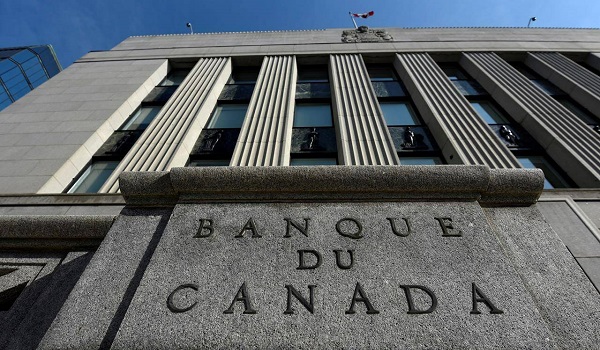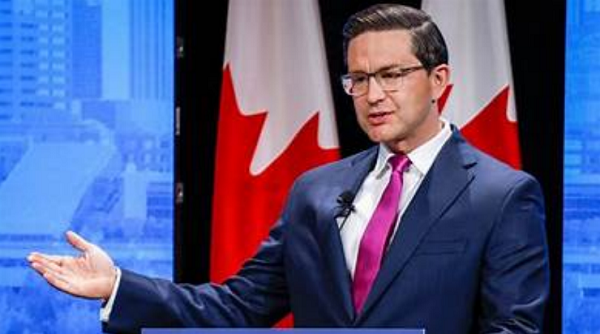Canadians should prepare for rates to remain higher in the long run, BoC senior deputy governor says
Canadians need to be prepared for the growing likelihood that interest rates won’t return to the low levels seen over the past 15 years, Bank of Canada senior deputy governor Carolyn Rogers warned Thursday.
In a speech in Vancouver, the central bank’s second-in-command said that many of the economic forces that pulled down interest rates in recent decades are going into reverse. That “new normal” creates risks for indebted households, businesses and the broader financial system, which need to be managed proactively, she said.
“It may be tempting to believe the low rates that we all got used to will eventually come back. But there are reasons to think they may not,” Ms. Rogers said.
She pointed to tectonic shifts in the global economy, including a retirement wave among baby boomers and changing patterns of global trade and investment.
“We also look now to be in an era of higher levels of government debt. And geopolitical risks, such as an escalation of the war in Ukraine or the war in Israel and Gaza, could push rates higher globally – if they were to affect energy prices and supply chains in ways that could have a lasting impact on inflation,” she said.
The Bank of Canada has raised interest rates 10 times over the past year and a half to fight runaway inflation. That’s brought the bank’s benchmark policy rate to 5 per cent, the highest level since 2001.
Ms. Rogers avoided talking about the near-term path for interest rates. But her comments suggest that when the bank does eventually start lowering rates – something many Bay Street analysts expect to begin around the middle of next year – it may not lower them all that much.
This has major implications for homeowners with mortgages who are facing large payment shocks over the next few years when their mortgages reset.
“In all, around 40 per cent of mortgage holders have seen higher payments since early 2022. By the end of 2026, virtually all remaining mortgage holders will go through a renewal cycle and, depending on the path for interest rates, may face significantly higher payments,” Ms. Rogers said.
So far, mortgage delinquencies remain below prepandemic norms. However, delinquency rates on credit cards, car loans and unsecured lines of credit have returned to or exceeded levels before the COVID-19 pandemic. And Ms. Rogers noted that “it’s early” and “the effects of higher interest rates are still working their way through the economy.”
The prospect of a structurally higher interest rate environment has pushed global long-term interest rates – which are determined in bond markets – significantly higher in recent months. That leaves the financial system with less “wiggle room” if there’s a shock that causes financial conditions to tighten more, Ms. Rogers said.
In light of these risks, Canadian financial institutions need to be proactive about risk management, she said, noting with approval that banks are building up larger capital and liquidity buffers and putting aside more cash to deal with potential credit losses.
Bank regulators are also taking steps to reduce risks in the financial system. In July, the Office of the Superintendent of Financial Institutions announced plans that would require banks to hold more capital if their borrowers’ mortgages are negatively amortizing, meaning the borrowers’ payments are not covering all the interest they owe.
Speaking to the Senate banking committee last week, OSFI superintendent Peter Routledge said that variable rate mortgages with fixed payments were “a dangerous product” and that “the system would be healthier with less of that product.”
Ms. Rogers’s speech was the latest in a string of comments from senior central bank officials flagging the risk of structurally higher interest rates. In May, Governor Tiff Macklem warned that “nobody should expect that interest rates are going to go back down to the very low levels that we’ve seen over the last decade or so.”
Former deputy governor Paul Beaudry, who retired over the summer, gave a speech in June arguing that the “neutral rate” – the theoretical resting point for the central bank’s policy rate when inflation is on target and the economy is growing at full potential – is likely higher than appreciated. The bank’s current estimate puts it somewhere between 2 and 3 per cent.
In an appearance before the Senate banking committee last week, Mr. Macklem said he agreed with Mr. Beaudry’s assessment that the neutral rate is likely moving higher.
“Fiscal deficits are a lot higher, particularly in some of the largest economies in the world, [including] the U.S. That is going to put pressure on the neutral rate,” Mr. Macklem said. He also pointed to aging populations and the need for massive investments in renewable energy.
This article was reported by The Globe and Mail
















